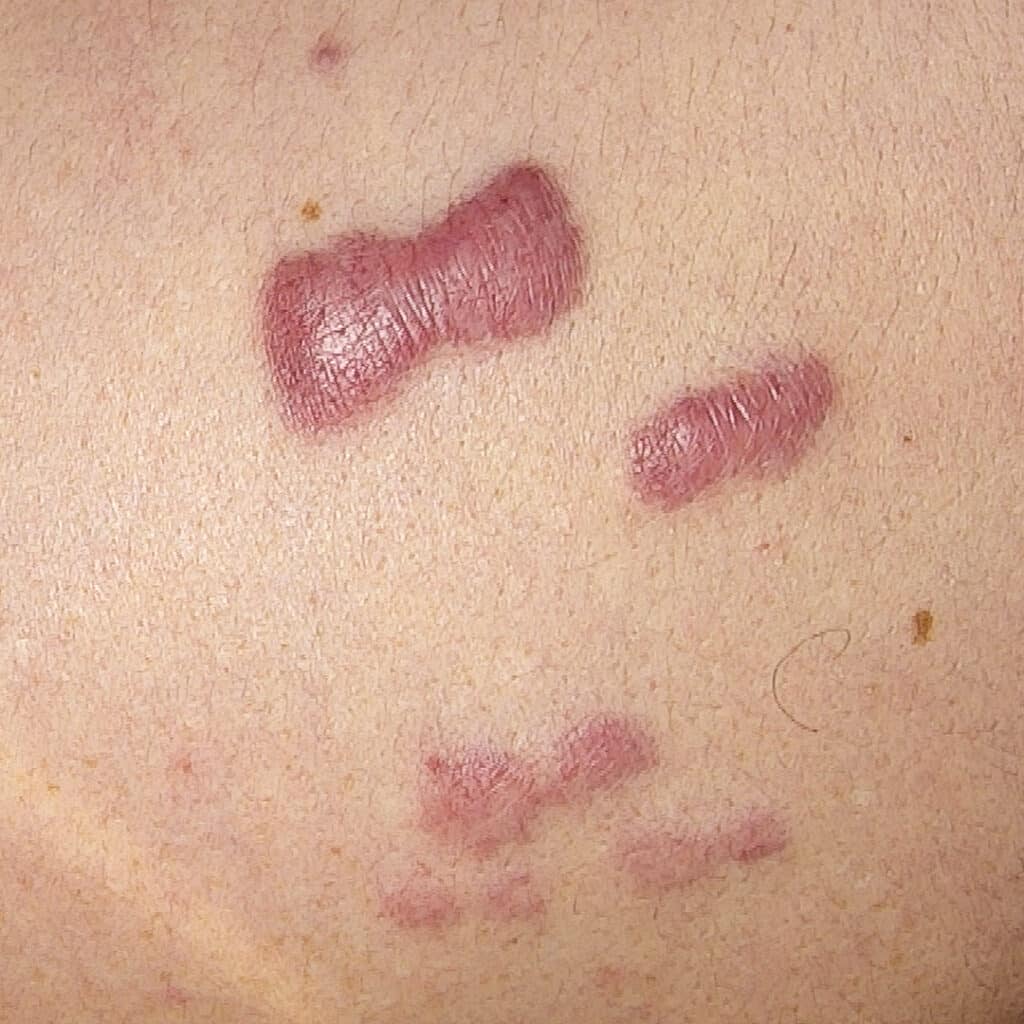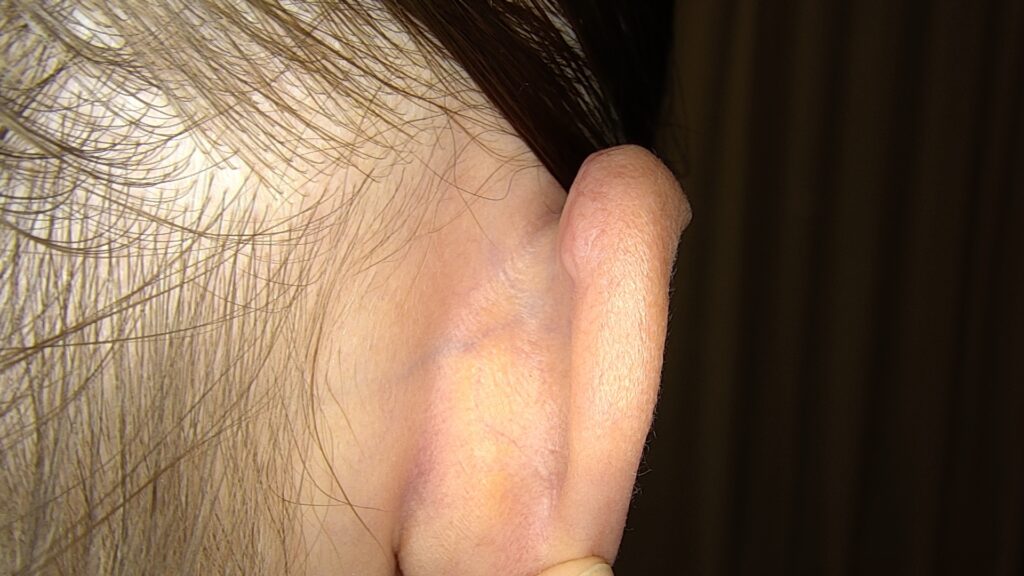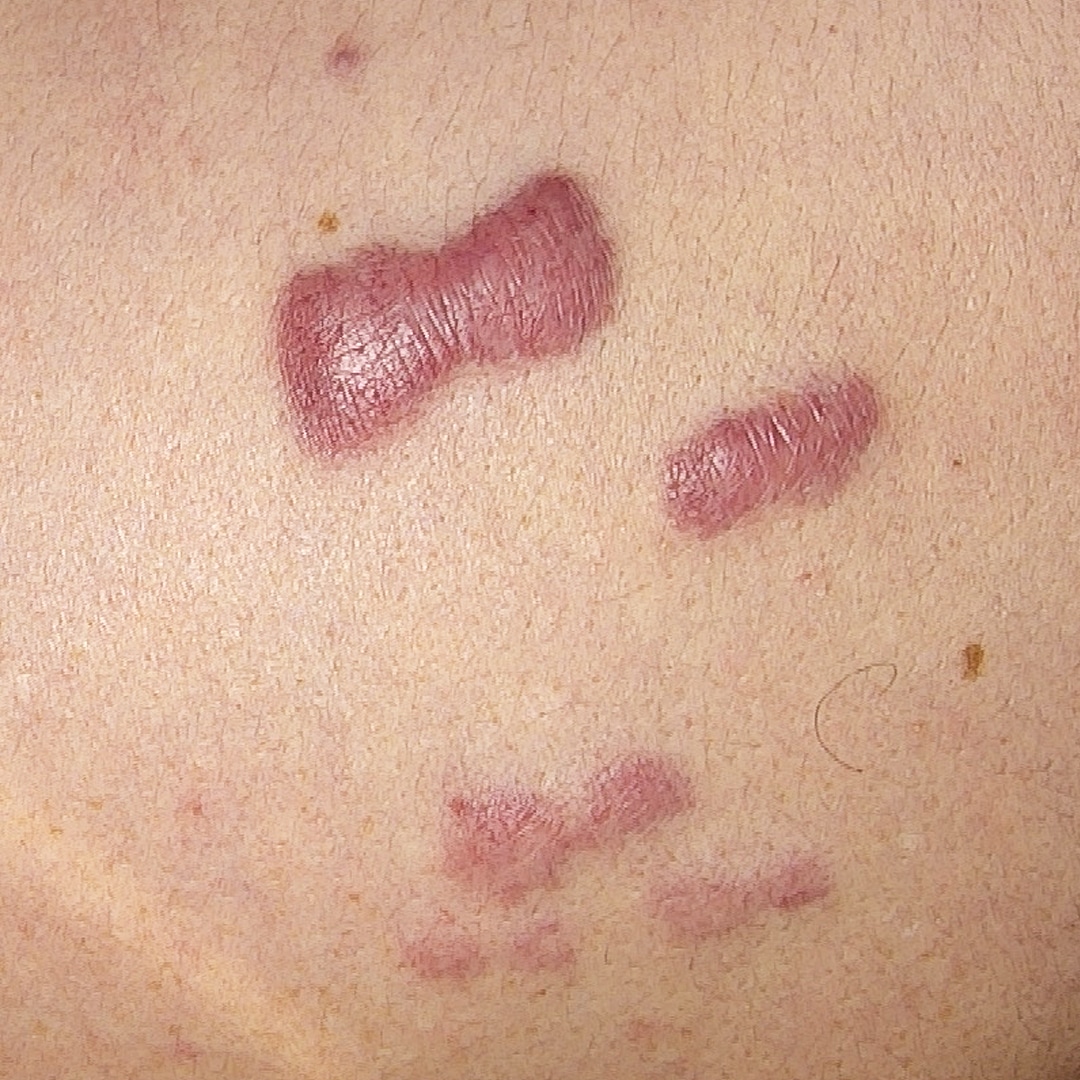Whether after an accident, an operation or even after a piercing - scars can occur in a wide variety of forms. For example, it can also come to overshooting scars - so-called keloids. However, there are modern dermatological procedures which can also provide relief in such a case.
Keloids are benign tumor-like lesions. By definition, they are excessively growing scar tissue that proliferates beyond the original wound margin, which is due to excessive collagen synthesis, i.e., an overreaction of the body. Keloids can also develop without prior injury or surgery, sometimes months or years after an event.
Anyone who is prone to excessive scarring should consult a specialized dermatologist quickly: on the one hand, there are special wound care preparations with silicone that draw an invisible but important film over the fresh wounds, on the other hand, early use of Fractional laser improve the situation considerably.

On the one hand, keloids are aesthetically very disturbing for the affected person, but they can also lead to movement restrictions, as the tissue is often hard and inelastic, which can be problematic, especially near a joint.
Due to their red color and bulging appearance, keloids are often confused with so-called hypertrophic scars, which turned out somewhat thicker than desired due to a long-lasting inflammatory reaction. However, there is a significant difference between these two types of scars: while hypertrophic scars can also be treated with lasers, for a long time there was no satisfactory treatment option for true keloids. Fortunately, thanks to a procedure that was forgotten in dermatology for many years, this is no longer the case today.
The Radiotherapy is primarily used to treat inoperable skin tumors, but it also works excellently in the treatment of keloids. However, this x-ray therapy is not used as a stand-alone therapy because it has a very high recurrence rate. If one starts a series of X-ray irradiations immediately after the surgical excision of the keloid, a new proliferation of the scar tissue is prevented, a "normal" scar is formed, which is much less conspicuous and, above all, no longer causes any discomfort.


However, due to a high complexity with many variables, a standardization of keloid treatment is not possible. Before such radical treatments or combination therapies should even be considered, we first advise simpler therapies, such as an intralesional triamcinolone injection (TAC) or a cryosurgical procedure with liquid nitrogen. If these are unsuccessful, it is still possible to move on to combination therapies.
In any case, it is important to find a therapy procedure tailored to the patient in order to achieve the highest possible chance of success with the lowest possible risks. Let us advise you.




